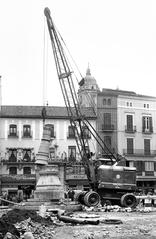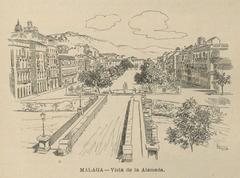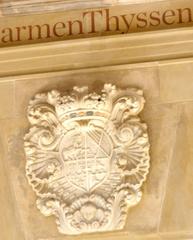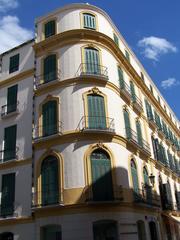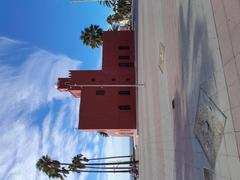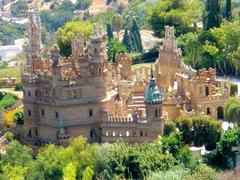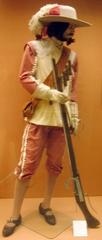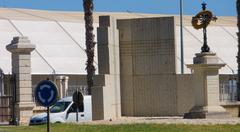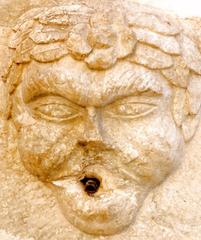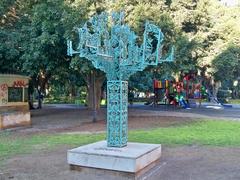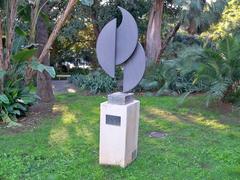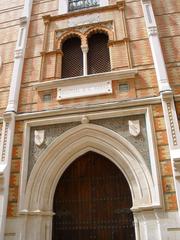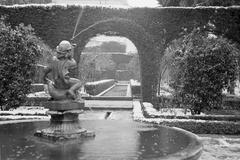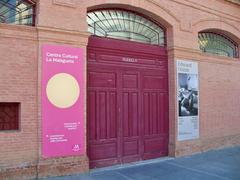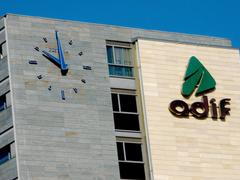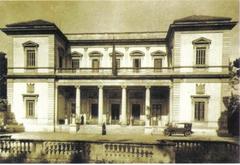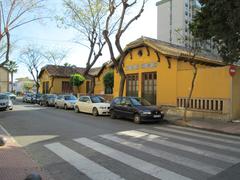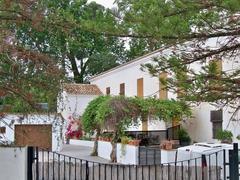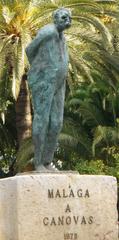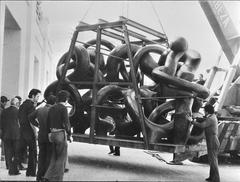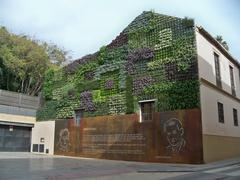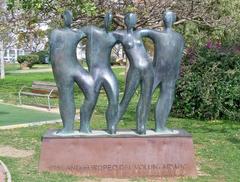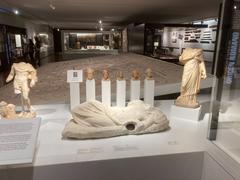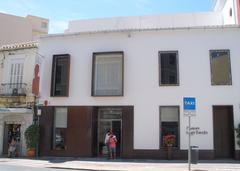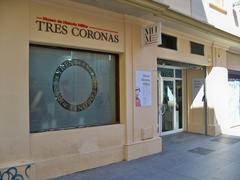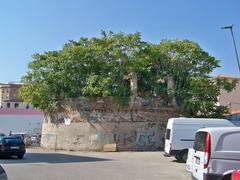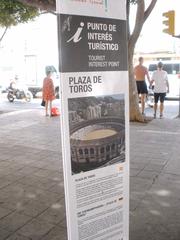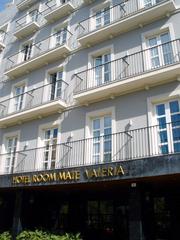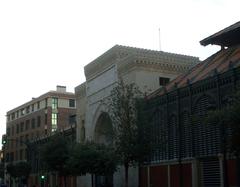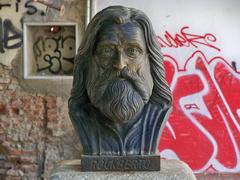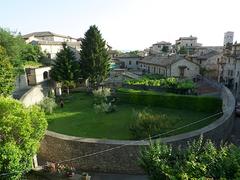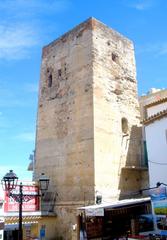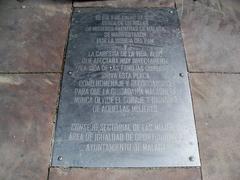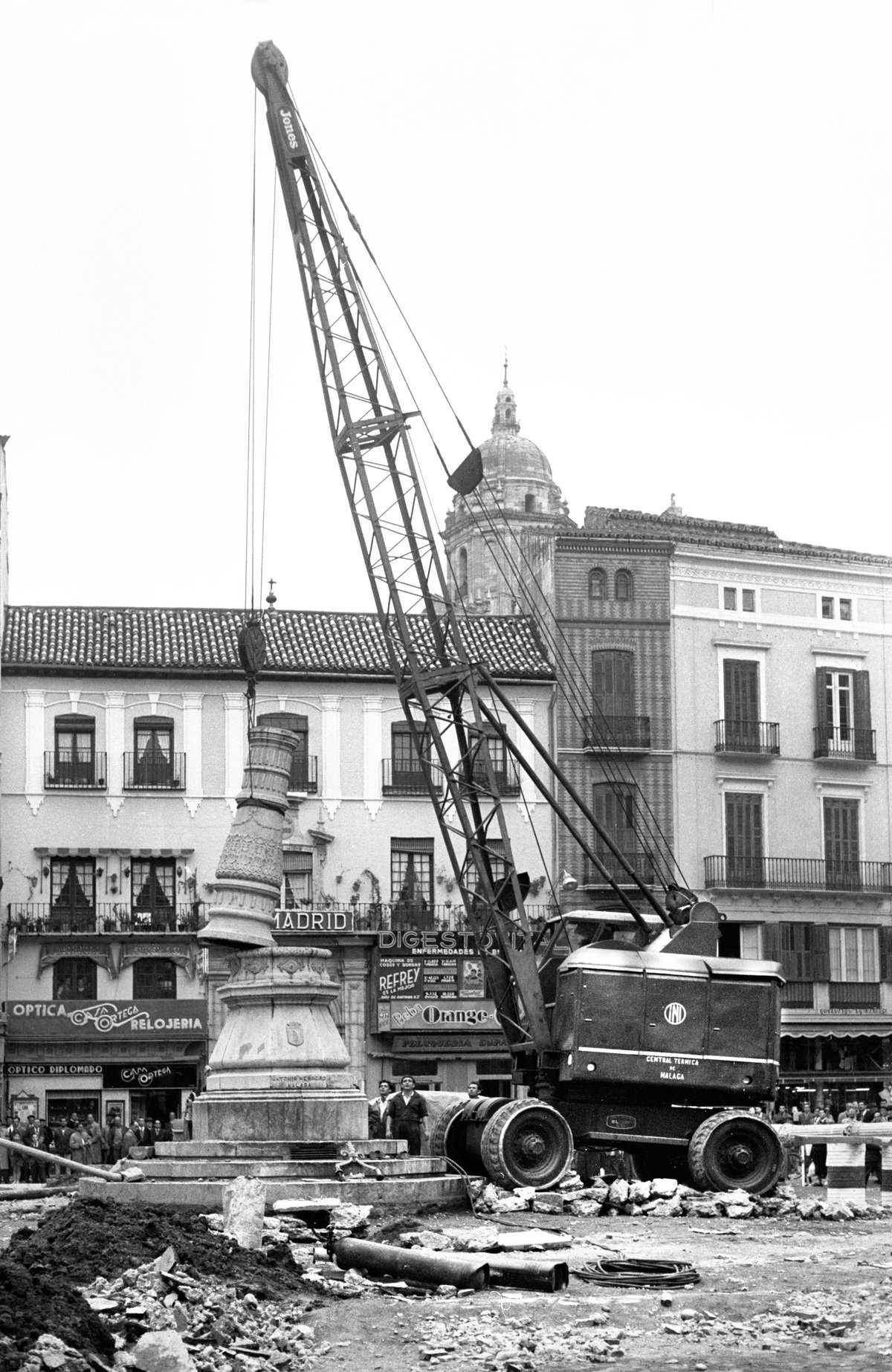
El Sonajero Málaga: Visiting Hours, Tickets, and In-Depth Visitor Guide
Date: 14/06/2025
Introduction
El Sonajero is a unique and storied landmark in Málaga, Spain, emblematic of the city’s evolving urban identity and deep-rooted sense of community. Originally constructed in the early 20th century, this monumental streetlamp—nicknamed for its bell-like ornamental top—was first installed in the bustling Plaza de la Constitución in 1902. Today, it resides in the García Grana neighborhood, continuing its legacy as a witness to Málaga’s history and a symbol of local pride (La Opinión de Málaga; Visit-Andalucia).
This guide provides an in-depth exploration of El Sonajero’s historical evolution, cultural significance, architectural features, and its role in Málaga’s urban landscape. It also offers practical visitor information—including visiting hours, ticketing, accessibility, and expert tips—to help you enjoy a meaningful visit. Whether you’re a history enthusiast, cultural explorer, or simply curious about Málaga’s hidden gems, this article will equip you with everything you need for a rewarding experience.
Table of Contents
- Historical Evolution of El Sonajero
- Cultural Significance and Traditions
- Architectural Features and Urban Context
- Social and Economic Impact
- Visitor Information: Hours, Tickets, Tours, and Photography
- Practical Tips for Visitors
- Sustainable Tourism and Community Stewardship
- Visuals and Media Recommendations
- Frequently Asked Questions (FAQ)
- Conclusion
- Sources and Further Reading
Historical Evolution of El Sonajero
El Sonajero’s story is inseparable from that of Málaga itself. The city’s roots stretch back nearly 3,000 years, having evolved through Phoenician, Roman, Moorish, and Christian periods (Visit-Andalucia). The iconic streetlamp was installed in the Plaza de la Constitución in 1902, crafted by the renowned Herreros Brothers’ foundry. Its presence in the city’s main square made it a familiar sight for generations, serving both as an illuminating fixture and a gathering point for locals (Archivo Histórico UMA).
In 1959, a wave of urban redevelopment led to the lamp’s relocation to the García Grana neighborhood, specifically to the Plaza de la Biznaga. This move reflected not only the city’s changing landscape but also its ability to adapt and preserve elements of its heritage in new contexts (La Opinión de Málaga). After suffering vandalism and neglect, El Sonajero underwent a significant restoration in 2012, reaffirming its place as a cherished symbol of Málaga’s urban memory (Europa Press; Malaga Hoy).
Cultural Significance and Traditions
El Sonajero is deeply intertwined with Málaga’s vibrant traditions and sense of community. It has witnessed countless public celebrations and transformations—from Semana Santa processions to neighborhood festivities. While no longer a central fixture in the city’s main square, its presence in García Grana continues to embody local resilience and civic pride. The lamp is especially revered by longtime residents, many of whom recall its original location and the warmth it provided during winter months (Salvemos Málaga).
Málaga’s cultural calendar is rich with events that can be experienced in proximity to El Sonajero, including Semana Santa (Holy Week), Feria de Agosto, and Noche de San Juan. These festivals offer visitors immersive opportunities to engage with local customs and witness the city’s enduring traditions (Hey Explorer; Visitanddo).
Architectural Features and Urban Context
El Sonajero exemplifies early 20th-century Spanish urban design. The lamp is notable for its wrought-iron construction, intricate scrollwork, and the cluster of spherical glass lamps at its top, which resemble a rattle or bells. Its robust base and elegant proportions made it a favored subject for photographs and postcards throughout its history (La Opinión de Málaga).
Today, El Sonajero stands in the Plaza de la Biznaga—a modest, community-oriented square in García Grana. The neighborhood itself reflects Málaga’s history of urban expansion, offering visitors a glimpse into authentic local life. The lamp’s journey from the bustling city center to this residential district mirrors broader trends in Málaga’s urban regeneration (Malaga Monumental).
Social and Economic Impact
El Sonajero’s ongoing preservation highlights the importance of community stewardship in Málaga’s heritage management. The monument’s presence in García Grana has contributed to a sense of local identity and pride. Its accessibility encourages both residents and visitors to engage with the city’s history outside of typical tourist circuits.
Tourism, especially during festivals, brings economic benefits to surrounding businesses—cafés, bakeries, and shops—sustaining the neighborhood’s vibrancy and fostering goodwill between locals and visitors (Visitanddo).
Visitor Information: Hours, Tickets, Tours, and Photography
- Location: Plaza de la Biznaga, García Grana neighborhood, Málaga, Spain
- Accessibility: Open-air public space; accessible 24/7
- Tickets: No tickets required—El Sonajero is free to visit
- Getting There: Easily reachable via EMT Málaga bus lines (3, 11, 21), taxi, or a 15-minute walk from “La Unión” Metro station; near Estación María Zambrano (Mapcarta)
- Best Time to Visit: Daylight hours for optimal viewing and photography; spring and autumn offer comfortable weather with fewer crowds (Spain.info)
- Guided Tours: El Sonajero is included in several heritage and urban history walking tours; check with local tour providers or explore independently with digital maps (Voyage Tips; HousingAnywhere)
- Photography: Photography is encouraged. Early morning and late afternoon provide the best light, and festival periods offer colorful scenes.
Practical Tips for Visitors
- Accessibility: The plaza is generally accessible, though some surfaces may be uneven. Contact the Málaga tourist office for specific needs (Malaga.us).
- Local Etiquette: Respect the lamp and plaza; avoid climbing or attaching objects. Be mindful of siesta hours (2–5 pm) when activity slows.
- Safety: Málaga, including García Grana, is considered safe. Standard urban precautions apply.
- Supporting Local Businesses: Enjoy local cuisine—such as espetos and Málaga wine—at neighborhood cafés.
- Combine with Other Sites: Visit nearby attractions like Parque de Málaga, Atarazanas Market, or Málaga’s historic center (Spain.info).
- Sustainable Travel: Use public transport, walk, or cycle for an eco-friendly visit (Condé Nast Traveler).
Sustainable Tourism and Community Stewardship
El Sonajero’s restoration and continued care are products of collaboration between local residents and city authorities, embodying Málaga’s approach to sustainable heritage management. Visitors are encouraged to:
- Maintain cleanliness, minimize noise, and respect community norms.
- Support local initiatives and businesses.
- Follow Leave No Trace Principles.
- Participate in community events and heritage walks to deepen engagement (Oway Tours).
Visuals and Media Recommendations
- Images: Use high-quality photos of El Sonajero and the surrounding plaza, with descriptive alt text (e.g., “El Sonajero monumental streetlamp in Plaza de la Biznaga, Málaga”).
- Maps: Include an interactive map to assist with navigation.
- Virtual Tours: Explore digital resources on the official Málaga tourism site for virtual visits.
Frequently Asked Questions (FAQ)
Q: What are the visiting hours for El Sonajero?
A: El Sonajero is accessible 24/7 in an open public plaza.
Q: Is there an entry fee or ticket required?
A: No, visiting El Sonajero is free and does not require tickets.
Q: Are guided tours available?
A: While there are no tours dedicated exclusively to El Sonajero, it is included in broader heritage and urban history tours.
Q: Is the monument accessible for visitors with mobility challenges?
A: The plaza is open and mostly flat, but some surfaces may be uneven. Contact the tourist office for details.
Q: What is the best time to visit?
A: Spring and autumn offer pleasant weather; early morning and late afternoon are ideal for photography and quieter visits.
Conclusion
El Sonajero stands as a luminous testament to Málaga’s layered history, communal spirit, and commitment to heritage preservation. Its story—from a centerpiece in the Plaza de la Constitución to a beloved landmark in García Grana—reflects the city’s ongoing balance between progress and tradition. Visitors benefit from free, unrestricted access and are invited to engage with both the monument and the neighborhood’s authentic atmosphere. By practicing sustainable tourism and respecting local customs, you help ensure that El Sonajero remains a cherished landmark for future generations.
Plan your visit using digital guides and consider exploring Málaga’s rich tapestry of history, culture, and culinary delights. For the latest insights, guided audio tours, and travel tips, download the Audiala app and connect with us on social media.
Sources and Further Reading
- Exploring El Sonajero: Visiting Hours, Tickets, Málaga Historical Sites, and Cultural Highlights (Visit-Andalucia)
- Description and Location of El Sonajero (La Opinión de Málaga)
- El Sonajero Visiting Hours, Tickets, and Insider Tips for Málaga’s Historic Landmark (Europa Press)
- El Sonajero Málaga: Visiting Hours, Tickets, and Sustainable Tourism Guide (Malaga Hoy)
- Semana Santa and Feria de Agosto Festivals (Hey Explorer)
- Traditions of Málaga (Visitanddo)
- Málaga Tourism Official Website (malagaturismo.com)
- Málaga Heritage Preservation (Malaga Monumental)
- Málaga Sustainable Travel and Urban Regeneration (Condé Nast Traveler)
- Málaga UNESCO Sites and Cultural Landscape (Malaga Sightseeing)
- Local Parties, Traditions and Customs of Málaga (Oway Tours)
- Málaga City Travel Tips (Spain.info)
